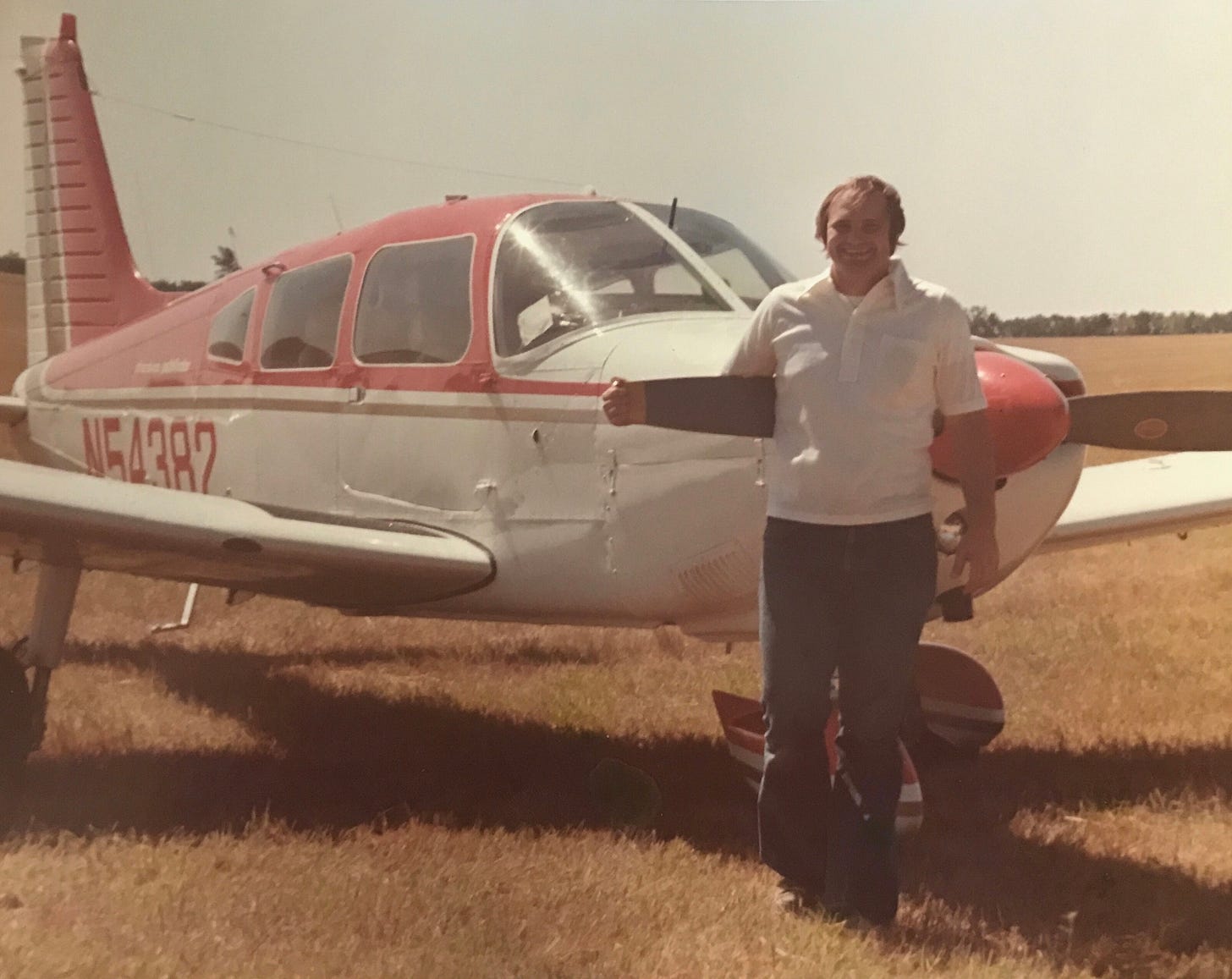Yesterday marked the 50th anniversary of the death of my mother, Sara Elizabeth Hills Graham—Sally to her friends and family.
On Sunday, July 13, 1975, my parents and their flight instructor, 27-year-old Frank Zimmerman, took off from Leadville, Colorado, in a single-engine, red-and-white Piper PA-28 they had recently purchased with their brother-in-law, Jim Dorian. My dad had earned his pilot's license the year before, and all four of them—my aunt, uncle, and my parents—flew from Wichita to Colorado Springs to take a mountain flying course and gain experience in alpine flight conditions.
That Sunday morning—the last session of the course—their instructor filed a flight plan from Aspen to Colorado Springs by way of Glenwood Springs, Hayden Pass, and Leadville. They took off at 10:08 AM. According to flight records, they landed in Leadville, and Zimmerman and my mother got out while my dad made a touch-and-go landing. They all loaded back in the plane at 11:15. At 11:20, Zimmerman made contact with another instructor, saying, “We are just about to the top of Weston Pass.” And then nothing.
The NTSB flight report ultimately pinned the crash on switching over the fuel tank, which led to an engine stall. Thin mountain air left them with little time to slow their descent. They went down “like a lead balloon,” Nancy Lee Zimmerman, the instructor’s widow, told me in a phone interview a few years ago.
My book opens with this scene—a crashed airplane on the top of the pass, my dad the lone survivor, who somehow managed to crawl out of the wreckage with a cracked back, broken ankles, and a concussion—and the ensuing fallout. He recovered in Denver at St. Joseph's Hospital for a few weeks before returning to Wichita, where my three-year-old brother and I, a 9-month-old baby, waited for him. He was only twenty-six and left to manage the grief of losing his high school sweetheart, caring for two small children who were unable to understand their mother’s sudden absence, all while navigating a family feud that had erupted between his siblings and their spouses over who would control the family’s shared companies and assets after my grandmother’s sudden death from a brain tumor the previous year left all her interest in limbo. It’s these intertwining, tragic narratives—my grandfather’s origin story, his meteoric rise in real estate and oil investments, his obsession with winning the American Dream at all costs, and the tragedy that loomed in our family’s ambition and division—that are at the tragic heart of this book.
When I teach Shakespeare, I often distill the core difference between tragedy and comedy to “tragedies end with death and comedies with marriage,” which means, of course, that ultimately, every human life is a tragedy. But that’s not the whole story, for on the other side of tragedy lies meaning, meaning that can’t be found anywhere else. It’s through storytelling, however, that this meaning gets teased out.
But life doesn’t unfold like a novel, with neat beginnings and ends. Motifs don’t unify the days and years, connecting themes aren’t immediately apparent, and the threads intertwining key moments are invisible until the writer imposes a structure. Which is why I love writing. I can impose meaning on events that otherwise seem random. I can play God and create order out of chaos. It’s why in the Judeo-Christian tradition, God “speaks” the universe into existence and Adam names the animals. Language structures reality, and I, as author, get to be the meaning maker.
As I write these tragedies, I can zoom out. The pain and trauma, the disappointments and the what-might-have-beens branch off and bend into beautiful patterns, patterns I can tease out and braid together as I hover over these forgotten lives fifty years later. I don’t know why my mother died in a senseless tragedy all those years ago, leaving behind two children under three. It’s a question I spent a large chunk of my life asking. But in writing her story, I can see the threads holding her life together and the patterns they create. I can “speak” order into the past and by doing so, create order out of chaos. But sometimes, those patterns get tangled in the knots of my imperfect writing and my lingering fear that I will never be able to tell the true story buried underneath. But I carry on.
The revision process has been raw this week as I meditate on the tragedies that erupt in all our lives every day. I’ve been bogged down with details and narrative arcs, trying to weave a tapestry out of disparate events while not sinking under the emotional weight of what I’m trying to accomplish. I only hope I can do these lives justice. But as Hemingway said in his non-fiction novel Death in the Afternoon, “Any man’s life told truly is a novel.” It’s finding the story buried in each life that’s the real challenge.
I want to thank all my subscribers who have been following along this summer. Writing each day is an act of faith, faith that this story is worth telling, faith that I have what it takes to tell it, and faith that at the end, someone somewhere will want to read it. Your support helps me keep the faith alive.








You are such a beautiful writer Susan. Thank you for including me. ❤️ It is a heavy burden to be the keeper of this remarkable family history, but I can’t think of anyone better to do it. Your mastery of writing and tender soul is bringing the story to life.